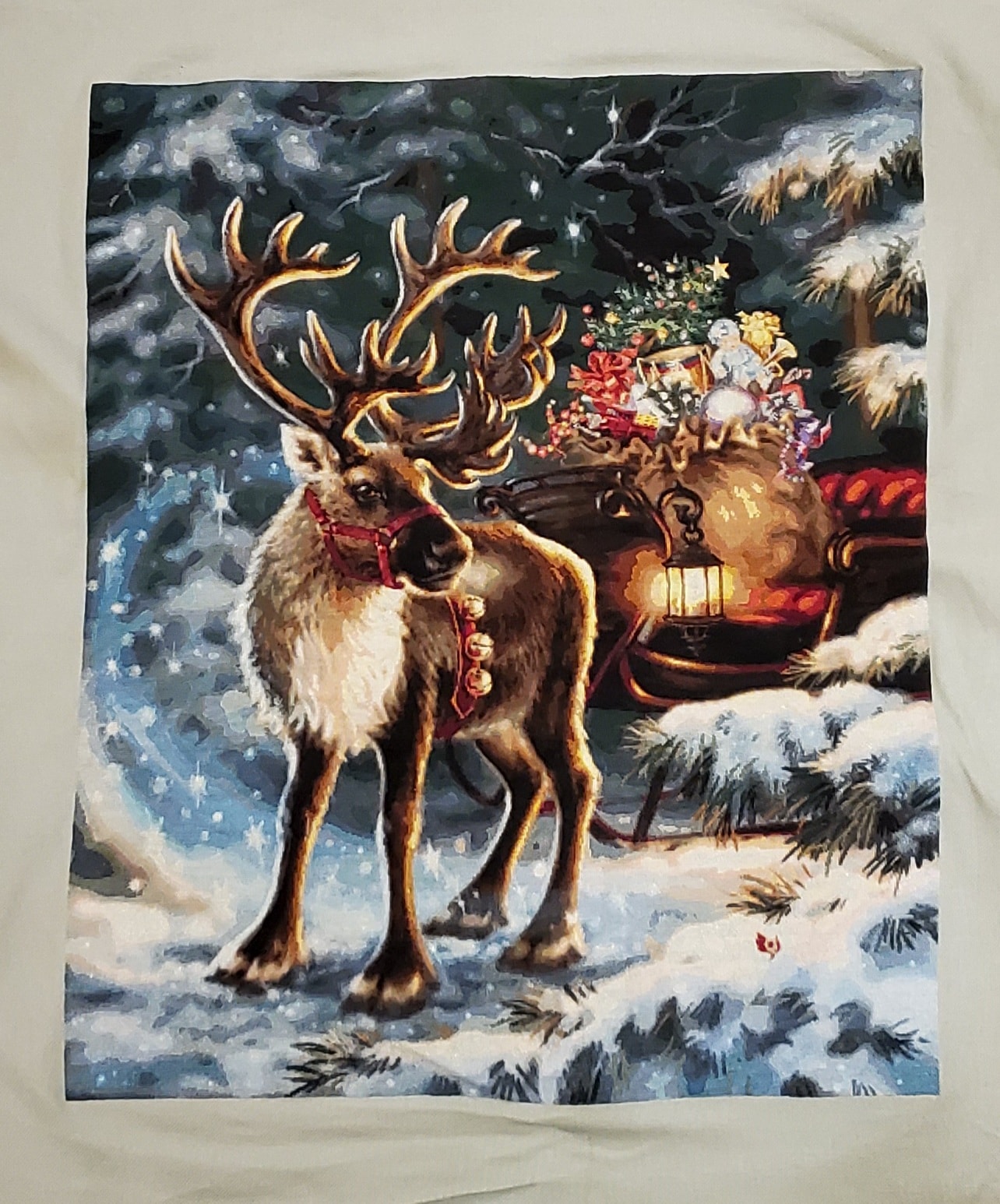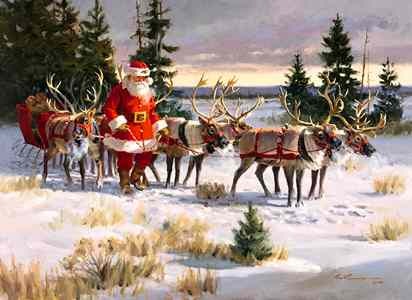The Enchanting World of Christmas Reindeer: Beyond the Festive Myth
Related Articles: The Enchanting World of Christmas Reindeer: Beyond the Festive Myth
Introduction
With enthusiasm, let’s navigate through the intriguing topic related to The Enchanting World of Christmas Reindeer: Beyond the Festive Myth. Let’s weave interesting information and offer fresh perspectives to the readers.
Table of Content
The Enchanting World of Christmas Reindeer: Beyond the Festive Myth

The image of Santa Claus’s reindeer pulling his sleigh through the snowy night is a cherished part of Christmas tradition. These majestic creatures, with their iconic antlers and powerful build, are deeply ingrained in our festive imagery. But beyond the whimsical tales, the reality of reindeer is equally fascinating, revealing a unique adaptation to the harsh Arctic environment and a rich cultural significance.
The Biology of Reindeer: Masters of the Arctic
Reindeer, also known as caribou in North America, are members of the deer family, scientifically classified as Rangifer tarandus. They are the only deer species where both sexes grow antlers, a distinctive feature that plays a crucial role in their survival.
Antlers: A Symbol of Strength and Adaptation
Reindeer antlers are not mere decorations; they are essential tools for survival. These bony structures, covered in velvety skin, grow annually, shedding and regrowing in a cyclical process. The antlers serve several purposes:
- Social Status: Antler size and shape indicate the reindeer’s age, health, and dominance within the herd. Larger antlers signal a stronger, more mature male, attracting females during the mating season.
- Competition: Antlers are used in territorial battles between males, with the dominant individual securing access to females and resources.
- Digging: The antlers aid in digging through snow to access lichen, a primary food source during winter.
- Defense: While primarily used for social signaling and competition, antlers can also be used for defense against predators like wolves and bears.
A Unique Diet: Navigating the Arctic Landscape
Reindeer are herbivores, primarily feeding on lichen, a symbiotic organism that grows on rocks and trees. Lichen is a low-nutrient food, but reindeer have adapted to extract the necessary sustenance.
- Digging: Reindeer use their hooves and antlers to dig through snow and ice to access lichen.
- Specialized Digestive System: Reindeer possess a unique digestive system capable of breaking down the tough cellulose in lichen.
- Seasonal Diet: During summer, their diet expands to include grasses, sedges, and other vegetation.
Migration: A Journey of Endurance
Reindeer are renowned for their remarkable migrations, often spanning hundreds of miles. These journeys are driven by the availability of food and the need to avoid harsh weather conditions.
- Seeking Lush Pastures: In spring, reindeer migrate to calving grounds in the tundra, where they give birth and raise their young.
- Winter Retreat: As winter approaches, they migrate to forested areas, seeking shelter and access to lichen.
- Navigational Skills: Reindeer possess an innate sense of direction and use various cues, including the Earth’s magnetic field, to navigate their migratory routes.
Cultural Significance: A Deep Connection with Humans
Reindeer hold a profound cultural significance for Indigenous peoples in the Arctic regions. They have been a vital source of sustenance, clothing, and transportation for centuries.
- Food Source: Reindeer meat provides essential protein and nutrients for Indigenous communities.
- Clothing and Tools: Reindeer hides are used for clothing, tents, and other tools.
- Transportation: Reindeer are used for pulling sleds and transporting goods, especially in areas with limited access.
- Spiritual Significance: Reindeer often play a prominent role in Indigenous mythology and folklore, representing strength, resilience, and connection to the natural world.
Conservation Status: Challenges and Threats
Despite their adaptability and resilience, reindeer populations are facing various challenges, including:
- Climate Change: Rising temperatures and changes in precipitation patterns are affecting the availability of lichen and other food sources.
- Habitat Loss: Development and human encroachment are reducing reindeer grazing areas.
- Predation: Increased wolf populations in some areas are posing a threat to reindeer herds.
- Overhunting: Unsustainable hunting practices can deplete reindeer populations.
Conservation efforts are essential to ensure the long-term survival of these iconic creatures. These efforts include:
- Protecting Habitat: Establishing protected areas and managing land use to minimize habitat loss.
- Sustainable Hunting Practices: Implementing quotas and regulations to ensure sustainable hunting.
- Climate Change Mitigation: Reducing greenhouse gas emissions to mitigate the effects of climate change on reindeer populations.
FAQs
Q: What is the difference between reindeer and caribou?
A: Reindeer and caribou are the same species, Rangifer tarandus. The term "caribou" is primarily used in North America, while "reindeer" is more common in Europe and Asia.
Q: Why do reindeer have antlers?
A: Reindeer antlers are used for social signaling, competition, digging, and defense. They play a vital role in their survival and social interactions.
Q: How do reindeer survive in the Arctic?
A: Reindeer have adapted to the harsh Arctic environment through their unique diet, specialized digestive system, and remarkable migration patterns.
Q: Are reindeer endangered?
A: While not globally endangered, reindeer populations are facing challenges due to climate change, habitat loss, and other threats. Conservation efforts are crucial to ensure their long-term survival.
Tips for Protecting Reindeer
- Support Sustainable Practices: Choose products that are sustainably sourced and do not contribute to habitat loss.
- Educate Yourself and Others: Learn about reindeer and the challenges they face and share this knowledge with others.
- Support Conservation Organizations: Contribute to organizations working to protect reindeer and their habitats.
Conclusion
Reindeer are fascinating creatures, adapted to the harsh Arctic environment with unique physical characteristics and behavioral traits. Their cultural significance and importance for Indigenous peoples underscore their deep connection to the natural world. As climate change and other threats continue to impact their populations, conservation efforts are essential to ensure the future of these iconic animals. Understanding the biology, ecology, and cultural importance of reindeer allows us to appreciate their role in the Arctic ecosystem and inspire us to act as responsible stewards of the environment.








Closure
Thus, we hope this article has provided valuable insights into The Enchanting World of Christmas Reindeer: Beyond the Festive Myth. We thank you for taking the time to read this article. See you in our next article!